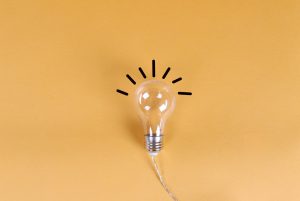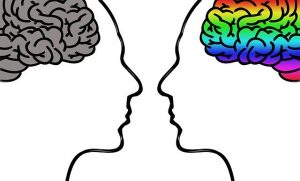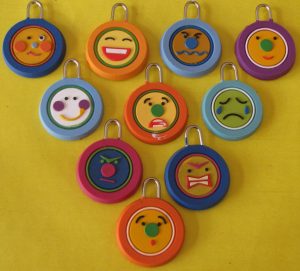1 The Importance of Early Childhood Mathematics
Janet Stramel

“Mathematical knowledge begins during infancy and undergoes extensive development over the first 5 years of life. It is just as natural for young children to think mathematically as it is for them to use language, because “humans are born with a fundamental sense of quantity” (Geary, 1994, p. 1), as well as spatial sense, a propensity to search for patterns, and so forth” (Clements, Sarama, & DiBiase, 2004).
Emergent mathematics is the earliest phase of development of mathematical and spatial concepts. Emergent mathematics encompasses the skills and attitudes that a child develops in relation to math concepts throughout the early childhood period. Emergent mathematics and those foundational math skills are not optional. They are necessary to the success of each and every student.
It is widely accepted that literacy learning begins the day a child is born. Reading to infants and toddlers and preschoolers is an early predictor of positive literacy success. Mathematical understanding can be regarded in the same way. During the first months of life, a child begins to construct the foundations for mathematical concepts. For example, before a child can count, he/she can construct ideas about mathematics. They recognize “more,” “less,” and basic equality.
Read the articles, “Early Math Skills Predict Later Academic Success” by Nancy Christensen. You will notice that early childhood mathematics is critical for the future success of children (Duncan, 2007). As you read this article, reflect on what you have learned, what difference it makes to you as a future teacher and the children you will teach, and what you can do with this information.
Best Teaching Practices
As a teacher of mathematics, please remember these fundamental beliefs.
- Thinking about the problem, not just the answer, is what is most important. The teacher should be the facilitator, not the one with all the answers.
- Process is more important than product. Mathematics is not just “facts” to be memorized. The concepts children learn are of upmost importance; and then the memorization will come. Children must have experiences through play and using manipulatives and “reinvent” the concepts of mathematics in their own minds.
The National Council of Teachers of Mathematics (2014), in its publication Principles to Action, represents a unified vision of what is needed for teaching all students.
The eight Mathematics Teaching Practices can be found in the Executive Summary.
- Establish mathematics goals to focus learning.
- Implement tasks that promote reasoning and problem solving.
- Use and connect mathematical representations.
- Facilitate meaningful mathematical discourse.
- Pose purposeful questions.
- Build procedural fluency from conceptual understanding.
- Support productive struggle in learning mathematics.
- Elicit and use evidence of student thinking.
Read more about the Mathematics Teaching Practice in the Executive Summary.
Treat Children as Mathematicians
- Mathematicians often work for an extended time on a single problem. Allow your students ample time to work on a problem.
- Mathematicians collaborate with their colleagues and study the work of others. Allow your students to collaborate, argue, consult, defend, ask, explain, and pose questions to others.
- Mathematicians must prove for themselves that their solution is correct. Children must also prove to themselves that they have the correct solution. Give students time to think and discuss. Don’t be too quick to tell a student their answer is correct or incorrect; instead ask the student to explain their answer.
- The problems mathematicians work on are complex. Good problems ask students to find innovative solutions without a time limit. Problems should spark children’s thinking, rather than promote rote memorization.
- Mathematicians get satisfaction from the problem-solving process and take pride in their solutions. Children will understand the concepts and procedures more if they are allowed to use their own thinking processes. This also allows children to make connections to prior knowledge and real-life experiences.
- Mathematicians use unsuccessful attempts as stepping-stones to solutions. We need to emphasize mathematical thinking rather than just getting the correct answer.
NCTM/NAEYC Position Statement on Early Start in Learning Mathematics
The National Council of Teachers of Mathematics (NCTM) and the National Association for the Education of Young Children (NAEYC) published a Joint Position Statement (2010) affirming high-quality, challenging, and accessible mathematics education for 3- to 6-year-old children is a vital foundation for future mathematics learning. The ten research-based, essential recommendations to guide your classroom practice are:
- Enhance children’s natural interest in using mathematics to make sense of their world.
- Build on children’s background experience and knowledge.
- Base instruction on knowledge of children’s cognitive, linguistic, physical, and social-emotional development.
- Strengthen children’s problem solving and reasoning processes as well as representing, communicating, and connecting mathematical ideas.
- Ensure a coherent curriculum that is compatible with sequences of important mathematical ideas.
- Provide for children’s deep and sustained interactions with mathematical ideas.
- Integrate mathematics with other activities and other activities with mathematics.
- Provide ample time, materials, and teacher support for children to engage in play where they explore mathematical ideas.
- Use a range of experiences and teaching strategies to introduce mathematical concepts, methods, and language.
- Support children’s learning by thoughtful and continuous assessment.

Allow children to work for long periods of time on one problem. Good problems can have multiple solutions and different ways to arrive at those solutions; therefore, allow children to use their own methods for solving a given problem. Children’s excitement about mathematics comes from their own thinking abilities; encourage social interaction that promotes children to act as young mathematicians by requiring them to prove their answer and all the steps they took to attain the answer. Additionally, allow children to be wrong many times before being right. It is important to encourage children to see “wrong” answers as a natural part of mathematical processes.
Mindsets
“It’s not that I’m so smart, it’s just that I stay with problems longer.” – Albert Einstein
Mindset is a person’s usual attitude or mental state. For example, if you have an environmentalist mindset, you probably bring your own bags to the grocery store. The noun mindset was first used in the 1930s to mean “habits of mind formed by previous experience.”
In a growth mindset, people believe that their most basic abilities can be developed through dedication and hard work—brains and talent are just the starting point. This view creates a love of learning and a resilience that is essential for great accomplishment. Virtually all great people have had these qualities.
Fixed Mindset vs. Growth Mindset
In a fixed mindset, people believe their qualities are fixed traits and therefore cannot change. According to Dweck (2007), when a student has a fixed mindset, they believe that their basic abilities, intelligence, and talents are fixed traits. They think that you are born with a certain amount and that’s all you have.
Jo Boaler says that “it is through mistakes that knowledge will grow. Teachers do not need to be the all knowing expert. It is better to model being a curious inquirer. Someone who seeks to play with knowledge, learn with students and model being OK making mistakes and learning from them” (Boaler, 2016)
Read the following articles for more information about Growth Mindset:
- Decades of Scientific Research that Started a Growth Mindset Revolution from Mindset Works
- When Teachers Think Differently About Themselves As Math Learners, Students Benefit by Krysten Crawford
- Developing Mathematical Mindsets: The Need to Interact with Numbers Flexibly and Conceptually by Jo Boaler
- Watch the video “Boosting Math” by Dr. Jo Boaler and her students.
Want to know more about Growth Mindset? Check out these resources:
The following websites have more information on Growth Mindset.
- The Kansas State Department of Education (KSDE) has resources on the Mathematics Page
- Becoming a Math Person
- The Power of Belief – Mindset and Success
- Building a Mathematical Mindset Community
- Five Videos to Explore Mathematical Mindset
- We’re All Board with Mathematical Abilities (And Why That’s Important)
- 8 Teaching Habits that Block Productive Struggle in Math Students
- “The Knowledge” – The World’s Toughest Taxi Test
Social and Emotional Learning
In the Kansas Mathematics Standards (2017), there is a reference to the “Rose Capacities and Kansas Social, Emotional, and Character Development Model Standards.” Mandated by the Kansas State Legislature, the Rose Capacities are the intersection between cognitive and non-cognitive skills, which support the Standards for Mathematical Practice.
A whole child approach is critical to ensure that every student is healthy, safe, engaged, supported, and challenged. The Kansas Mathematics Standards provide a problem-solving approach that engages students in a conceptual understanding of mathematics. The Standards for Mathematical Practice ensure that students solve real-world problems by working with peers; formulating, communicating, and critiquing arguments; and persevering through difficulty. As students internalize these mathematical practices, they engage interpersonal and intrapersonal skills, also known as social and emotional learning (SEL) competencies.
To read more about SEL in Mathematics, look at the Inside Mathematics website.
the earliest phase of development of mathematical and spatial concepts
a person's usual attitude or mental state
In a growth mindset, people believe that their most basic abilities can be developed through dedication and hard work—brains and talent are just the starting point



